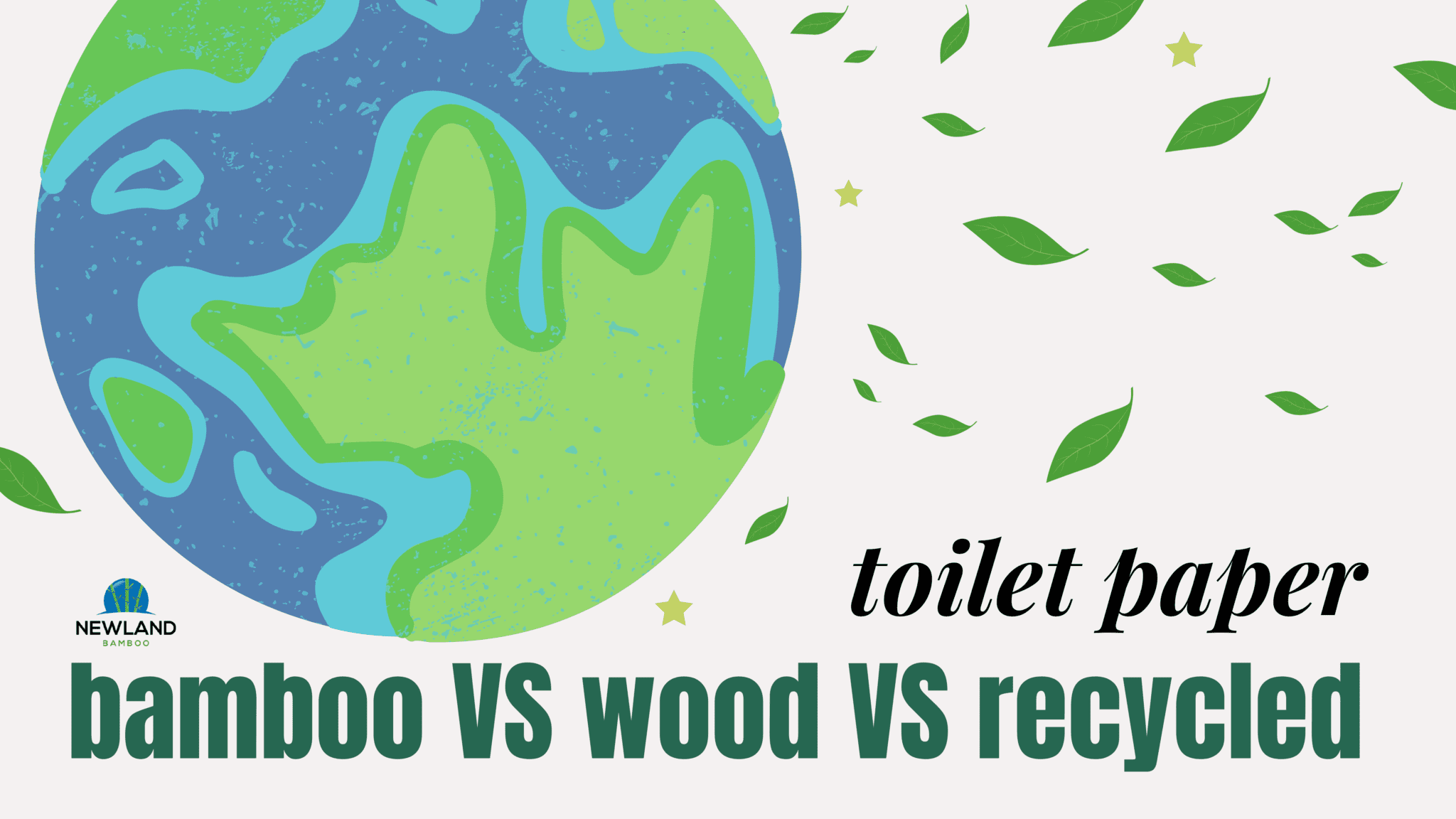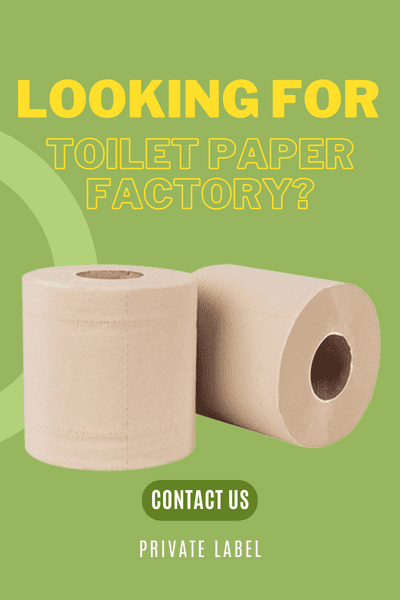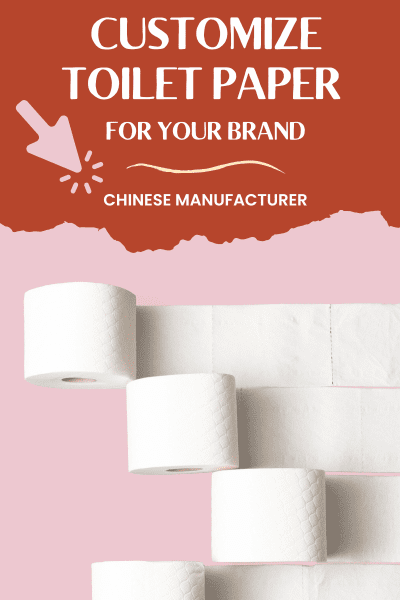クイックアンサー最も環境に優しいトイレットペーパーは?
環境に優しいトイレットペーパーとは、一般に、以下の原料を使用した製品を指す。 再生紙 または 持続可能な方法で調達された竹.
- 再生トイレットペーパー バージン材の必要性を減らし、森林を直接保護し、埋立廃棄物を減らす。
- 竹製トイレットペーパー 竹の急速な再生可能性と低カーボンフットプリントを活用し、土地と水の使用を最小限に抑えた代替手段を提供する。
従来の木材パルプ製トイレットペーパーと比較すると、竹製と再生紙の選択肢は、調達方法や生産への影響にもよるが、より持続可能な選択肢である。
1.それぞれのタイプを理解する
| タイプ | 資料 | 主な特徴 |
|---|---|---|
| 木材パルプのトイレットペーパー | 処女木(針葉樹、広葉樹など) | ソフトで耐久性に優れるが、森林伐採と資源多消費につながる |
| 再生トイレットペーパー | 再生紙繊維 | 廃棄物を減らし、森林を保護する。 |
| 竹製トイレットペーパー | 成長の早い竹 | 再生可能性が高く、環境に優しく、自然な柔らかさ |
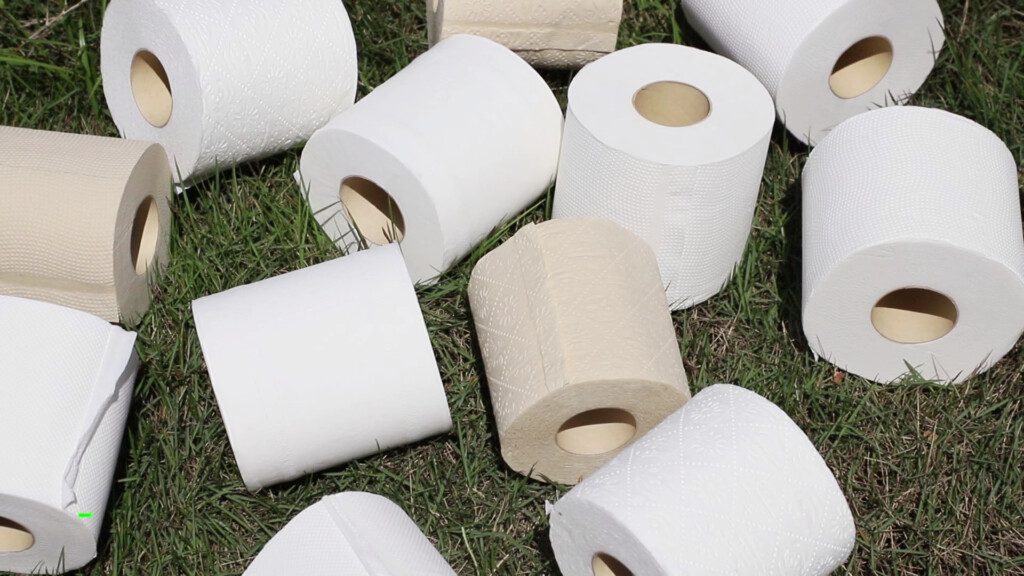
2.主な比較
2.1 環境への影響
- 木製トイレットペーパー:環境コストが高い-伐採、重水、エネルギー使用が必要。
- 再生トイレットペーパー:既存の繊維を再利用することで森林保護に役立つが、加工には化学薬品が使用される可能性がある。の分析によると エコロジストしかし、すべての再生紙が同じように作られているわけではなく、製造方法によって環境への優しさは異なります。 エコロジスト』誌の他の記事はこちら.
- 竹製トイレットペーパー:竹は成長が早く、水も少なくて済み、植え替えの必要もない。しかし NRDC 植林が自然林に取って代わると、竹は再生紙よりも環境にやさしくない場合があると指摘するが、持続可能な方法で調達された竹は、再生可能性が高く、低炭素な選択肢であることに変わりはない。 参考NRDCのティッシュ・スコアカード.
簡単なまとめ
純粋な森林保護では再生紙が勝ち、二酸化炭素削減と再生可能な調達では竹がリードする。
従来のトイレットペーパー、再生トイレットペーパー、竹製トイレットペーパーの違いをよりよく理解するために、以下の短い比較ビデオをご覧ください:
2.2 ユーザー・エクスペリエンス
- 木材:非常にソフトで厚みがあり、伝統的な「高級感」がある。
- リサイクル:粗く、薄く、一貫性がないことが多い。
- バンブー:自然にやわらかく、低刺激性で、厚すぎず丈夫。
2.3 配管と浄化槽の安全性
- 木材:厚手のウッドペーパーの中には、目詰まりを起こすものがあります。
- リサイクル:一般的に安全だが、ブランドによって異なる場合がある。
- バンブー:浄化槽への安全性が高く、素早く自然に溶けるので、RV車や田舎の家、エコリゾートに最適。
2.4 ビジュアル比較表
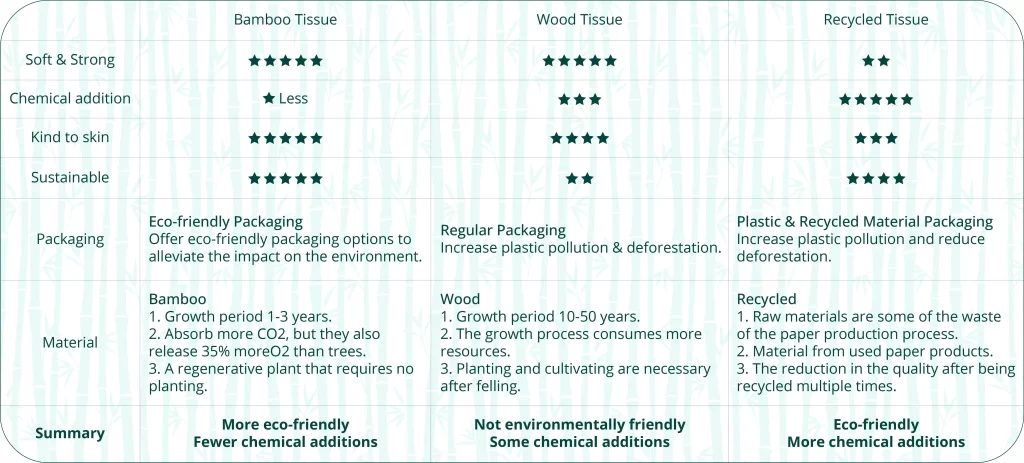
この表は、柔らかさ、化学物質の添加、持続可能性、パッケージ、素材に基づく竹、木、リサイクルティシューの違いを強調している。
3.長所と短所のまとめ表
| タイプ | 長所 | 短所 |
|---|---|---|
| 木材 | 非常に柔らかく、強い | 高い資源利用、森林破壊の懸念 |
| リサイクル | 環境に優しく、森林を保護する | 質感が粗く、化学物質が残留している可能性がある |
| バンブー | 再生可能で、柔らかく、浄化槽に安全で、二酸化炭素排出量が少ない。 | やや高いコスト、土地利用の議論 |
4.よくあるご質問
-
木製、リサイクル、竹製のトイレットペーパーの違いは?
木質紙はバージンツリーを使用し、再生紙は古い紙の繊維を再利用し、竹は成長の早い植物を使用し、化学物質の使用を最小限に抑え、カーボンフットプリントを低く抑えている。
-
なぜ竹製のトイレットペーパーが環境に良いのか?
竹は再生が早く、水が少なくて済み、有害な農薬も使わず、従来の樹木よりも多くの二酸化炭素を吸収する。
-
竹製のトイレットペーパーは浄化システムにとって安全ですか?
竹製トイレットペーパーは浄化槽に安全です。配管や浄化槽に害を与えることなく、すばやく溶けて自然に生分解します。
-
再生紙の方が竹よりも環境に優しいと主張する団体があるのはなぜですか?
再生紙は原生林を直接保護する。しかし、竹は二酸化炭素排出量を大幅に削減し、植え替えることなく成長するため、補完的な環境利益をもたらします。
-
竹製トイレットペーパーはパイプを詰まらせるか?
竹製のトイレットペーパーは、従来のトイレットペーパーや再生紙よりも早く溶けるように設計されているため、詰まりのリスクが軽減されます。
-
カーボンフットプリントが最も低いトイレットペーパーは?
竹のトイレットペーパー-その急速な成長速度と必要最小限の資源は、バージン木材パルプに比べてカーボンフットプリントがはるかに低い。
-
竹製のトイレットペーパーはなぜ少し高いのか?
なぜなら、持続可能な農業、責任ある加工、認証基準(FSCなど)は、本物の環境配慮を保証するための付加価値とコストになるからだ。
-
竹製トイレットペーパーは企業向けにカスタマイズできますか?
そうだ!のような企業 ニューランド・バンブー は、竹製トイレットペーパーのカスタマイズをプライベートブランドで提供し、環境意識の高いブランディング活動を支援している。
5.結論
木製、リサイクル、竹製のトイレットペーパーを比較すると、竹製がバランスの取れた前向きな選択であることは明らかだ。
環境にやさしく、やわらかく、丈夫で、水まわりにやさしい竹製トイレットペーパーは、未来に向けた日常的なソリューションです。
竹製トイレットペーパー:ブランドの新たなトレンド
持続可能な製品への世界的な需要が高まる中、竹製トイレットペーパーは、環境意識の高い市場との提携を目指すブランドにとって新たな機会をもたらしている。
竹ティシュを製品ポートフォリオに加えたいとお考えなら、あるいは環境に配慮した新しいラインを立ち上げたいとお考えなら、 ニューランド・バンブー はあなたのビジネス・ビジョンをサポートします。

